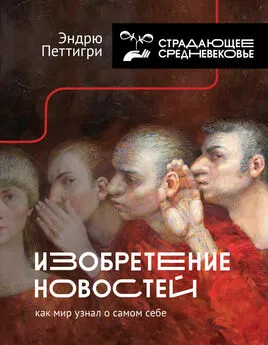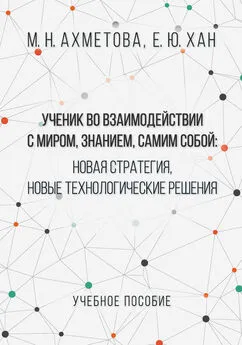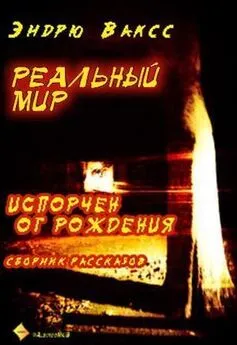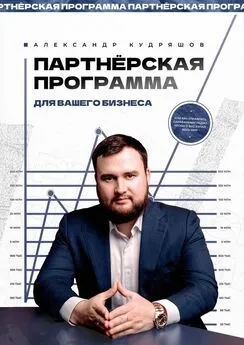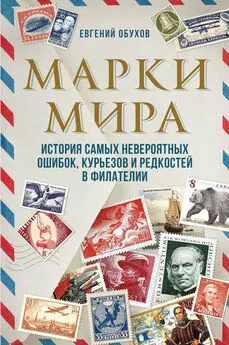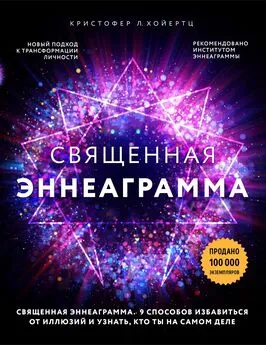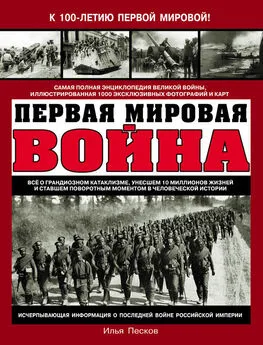Эндрю Петтигри - Изобретение новостей. Как мир узнал о самом себе
- Название:Изобретение новостей. Как мир узнал о самом себе
- Автор:
- Жанр:
- Издательство:АСТ
- Год:2021
- Город:Москва
- ISBN:978-5-17-127024-7
- Рейтинг:
- Избранное:Добавить в избранное
-
Отзывы:
-
Ваша оценка:
Эндрю Петтигри - Изобретение новостей. Как мир узнал о самом себе краткое содержание
Автор охватывает период почти в четыре века — от допечатной эры до 1800 года, от конца Средневековья до Французской революции, детально исследуя инстинкт людей к поиску новостей и стремлением быть информированными. Перед читателем открывается увлекательнейшая панорама столетий с поистине мульмедийным обменом, вобравшим в себя все доступные средства распространения новостей — разговоры и слухи, гражданские церемонии и торжества, церковные проповеди и прокламации на площадях, а с наступлением печатной эры — памфлеты, баллады, газеты и листовки. Это фундаментальная история эволюции новостей, начиная от обмена манускриптами во времена позднего Средневековья и до эры триумфа печатных СМИ.
В формате PDF A4 сохранен издательский макет.
Изобретение новостей. Как мир узнал о самом себе - читать онлайн бесплатно ознакомительный отрывок
Интервал:
Закладка:
66
Armstrong, ‘Some Examples’, p. 99.
67
Budelot, Messageries universitaires et messageries royales; E. John B. Allen, ‘The Royal Posts of France in the Fifteenth and Sixteenth Centuries’, Postal History Journal, 15 (January 1971).
68
Armstrong, ‘Some Examples’, p. 107.
69
Menache, Vox Dei.
70
Armstrong, ‘Some Examples’, p. 101.
71
Iris Origo, The Merchant of Prato: Francesco di Marco Datini (London: Jonathan Cape, 1957), p. 90.
72
Кроме того, произошел обмен десятью тысячами писем между Датини и его женой, которой пришлось вести хозяйство в Прато, когда Датини переехал во Флоренцию. Этому и уделяется основное внимание Ориго.
73
David Nicholas, Medieval Flanders (London: Longman, 1992). James M. Murray, Bruges, Cradle of Capitalism, 1280–1390 (Cambridge: Cambridge University Press, 2005).
74
Edwin S. Hunt, The Medieval Super-Companies: A Study of the Peruzzi Company of Florence (Cambridge: Cambridge University Press, 1994).
75
Raymond de Roover, Money, Banking and Credit in Medieval Bruges (Cambridge, MA: 1948).
76
Gilles le Bouvier, Le livre de la description des pays (Paris: Leroux, 1908), pp. 157–216.
77
Peter Spufford, Power and Profit: The Merchant in Medieval Europe (London: Thames and Hudson, 2002), pp. 143-52.
78
Frederic C. Lane, Andrea Barbarigo, Merchant of Venice, 1418–1449 (Baltimore, MD: Johns Hopkins University Press, 1944), p. 20.
79
Spufford, Power and Profit, pp. 25-8.
80
Lane, Andrea Barbarigo, pp. 199–200. Письма Барбариго из Валенсии редко приходили быстрее, чем за тридцать дней, а обычно шли около сорока дней.
81
Federigo Melis, ‘Intensita e regolarita nella diffusione dell’informazione economica generale nel Mediterraneo e in Occidente alla fine del Medioevo’, in Melanges en l’honneur de Fernand Braudel, 2 vols (Toulouse: Privat, 1973), I, 389–424. Spufford, Power and Profit, p. 27.
82
Philip O. Beale, A History of the Post in England from the Romans to the Stuarts (Aldershot: Ashgate, 1998), p. 33.
83
C. A. J. Armstrong, England, France and Burgundy in the Fifteenth Century (London: Hambledon, 1983), pp. 97-122, here p. 109.
84
A. Grunzweig, Correspondence de la filiale de Bruges de Medici (Brussels: Lamertin, 1931), I, 130-45.
85
Ниже, глава 5.
86
Hunt, Medieval Super-Companies , p. 73.
87
Этот момент был оценен миланским послом, когда он рекомендовал использовать торговую почту, A History of the Post in England , p. 160.
88
E. John B. Allen, Post and Courier Service in the Diplomacy of Early Modern Europe, vol. 3 (The Hague: Nijhoff, International Archive of the History of Ideas, 1972).
89
Richard Goldthwaite, The Economy of Renaissance Florence, (Baltimore, MD: Johns Hopkins University Press), p. 94.
90
Origo, Datini , pp. 85-6.
91
Там же, с. 86.
92
Robert S. Lopez and Irving W. Raymond, Medieval Trade in the Mediterranean World: Illustrative Documents (Oxford: Oxford University Press, 1955), no. 193; Gunnar Dahl, Trade, Trust and Networks: Commercial Cultures in Late Medieval Italy (Lund: Nordic Academic Press, 1998), p. 82.
93
Lopez and Raymond, Medieval Trade, no. 194; Dahl, Trade, p. 82.
94
Dahl, Trade , p. 83.
95
Gertrude R. B. Richards (ed.), Florentine Merchants in the Age of the Medici: Letters and Documents from the Selfridge Collection of Medici Manuscripts (Cambridge, MA: Harvard University Press, 1932), p. 109; Dahl, Trade, p. 83.
96
Paolo da Certaldo, Libro di buoni costumi , ed. Alfredo Schiaffini (Florence, 1946), pp. 149-50.
97
Goldthwaite, Economy of Renaissance Florence, p. 95.
98
Theodor Gustav Werner, ‘Das kaufmannische Nachrichtenwesen im spaten Mittelalter und in der fruhen Neuzeit und sein Einfluss auf die Entstehung der handschriftlichen Zeitung’, Scripta Mercaturae (1975), pp. 3-51.
99
Goldthwaite, Economy of Renaissance Florence , p. 94.
100
George Christ, ‘A Newsletter in 1419? Antonio Morosini’s Chronicle in the Light of Commercial Correspondence between Venice and Alexandria’, Mediterranean Historical Review, 20 (2005), pp. 35–66, here pp. 41-2.
101
Richards, Florentine Merchants, 263; Dahl, Trade, p. 116.
102
Dahl, Trade, p. 104. They were, however, permitted to play chess, to while away the long evenings.
103
Dahl, Trade, p. 119.
104
Lane, Andrea Barbarigo, pp. 127-8.
105
Marin Sanudo, I diarii, 58 vols (Venice: Visentini, 1879–1903); Pierre Sardella, Nouvelles et speculations a Venise au debut du XVIe siecle (Paris: Colin, 1949). Patricia H. Labalme and Laura Sanguieti White (eds), Cita Excelentissima: Selections from the Renaissance Diaries of Marin Sanudo (Baltimore, MD: Johns Hopkins University Press, 2008).
106
Sardella, Nouvelles , p. 21.
107
Там же, с. 32.
108
G. Priuli, I diarii, 4 vols (Bologna: Zanichelli, 1912-39), I, 153, cited by Mario Infelise, ‘From Merchants’ Letters to Handwritten Political Avvisi: Notes on the Origins of Public Information’, in Francisco Bethercourt and Florike Egmond (eds), Correspondence and Cultural Exchange in Europe, 1400–1700 (Cambridge: Cambridge University Press, 2007), pp. 33–52.
109
Sardella, Nouvelles , p. 42.
110
Там же, с. 50.
111
Sardella, Nouvelles, p. 50.
112
Wolfgang Behringer, Im Zeichen des Merkur: Reichspost und Kommunikationsrevolution in der Fruhen Neuzeit (Gottingen: Vandenhoeck & Ruprecht, 2003), p. 51.
113
Sardella, Nouvelles , pp. 56–71.
114
Philippe Dollinger, The German Hansa (London: Macmillan, 1970); Tom Scott, The City State in Europe, 1000–1600 (Oxford: Oxford University Press, 2012).
115
Lore Sporhan-Krempel, Nurnberg als Nachrichtenzentrum zwischen 1400 und 1700 (Nuremberg: Vereins fur Geschichte der Stadt Nurnberg, 1968), p. 19.
116
Steven Ozment, Three Behaim Boys: Growing up in Early Modern Germany (New Haven, CT: Yale University Press, 1990).
117
Sporhan-Krempel, Nurnberg als Nachrichtenzentrum, p. 21; Ниже, глава 3.
118
Werner, ‘Das kaufmannische Nachrichtenwesen’, p. 11.
119
Sporhan-Krempel, Nurnberg als Nachrichtenzentrum, p. 23.
120
Werner, ‘Das kaufmannische Nachrichtenwesen’, p. 7; Sporhan-Krempel, Nurnberg als Nachrichtenzentrum, p. 21.
121
Sporhan-Krempel, Nurnberg als Nachrichtenzentrum, p. 23.
122
Phyllis Goodhart Gordan, Two Renaissance Book Hunters: The Letters of Poggius Bracciolini to Nicolaus de Niccolis (New York: Columbia University Press, 1974).
123
Albert Kapr, Johann Gutenberg: The Man and his Invention (Aldershot: Scolar Press, 1996).
124
Andrew Pettegree, The Book in the Renaissance (New Haven, CT, and London: Yale University Press, 2010).
125
Margaret Meserve, ‘News from Negroponte: Politics, Popular Opinion and Information Exchange in the First Decade of the Italian Press’, Renaissance Quarterly, 59 (2006), pp. 440-80. For Rhodes see the Universal Short Title Catalogue (USTC) (search ‘Rhodes — 1480’).
126
Victor Scholderer, ‘The Petition of Sweynheim and Pannartz to Sixtus IV’, The Library, 3rd ser., 6 (1915), pp. 186-90, reprinted in his Fifty Essays in Fifteenth- and Sixteenth-Century Bibliography (Amsterdam: Hertzberger, 1966), pp. 72-3.
127
Chapter 4, below.
128
Falk Eisermann, Verzeichnis der typographischen Einblattdrucke des 15. Jahrhunderts im Heiligen Romischen Reich Deutscher Nation: VE 15 (Wiesbaden: Reichert, 2004).
129
R. N. Swanson, Indulgences in Late Mediaeval England: Passport to Paradise? (Cambridge: Cambridge University Press, 2007).
130
Pettegree, Book in the Renaissance, pp. 93-4; Paul Needham, The Printer and the Pardoner (Washington, DC: Library of Congress, 1986), p. 31.
131
USTC 743954, the indulgence of 1454 for contributions to the war against the Turks.
132
Eyn Manung der Christenheit Widder die Durken (1454). ISTC it00503500. GW M19909; Kapr, Gutenberg, pp. 212-14.
133
Calixtus III, Bulla Turcorum (1456). ISTC ic00060000. GW 0591610N. Die Bulla widder die Turcken. ISTC ic00060100. GW 05916.
134
Robert Schwoebel, The Shadow of the Crescent: The Renaissance Image of the Turk (14531517) (Nieuwkoop: De Graaf, 1967).
135
Ibid., pp. 157-60, 166-71.
136
Janus Moller Jensen, Denmark and the Crusades, 1400–1650 (Leiden: Brill, 2007), pp. 131-2; Schwoebel, Shadow of the Crescent, pp. 157-60, 166-71.
137
Nikolaus Paulus, ‘Raimund Peraudi als Ablasskommissar’, Historisches Jahrbuch, 21 (1900), pp. 645-82.
138
Falk Eisermann, ‘The Indulgence as a Media Event’, in R. N. Swanson (ed.), Promissory Notes on the Treasury of Merits: Indulgences in Late Mediaeval Europe (Leiden: Brill, 2006), pp. 309-30, here pp. 315-16.
Читать дальшеИнтервал:
Закладка:
